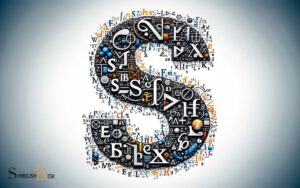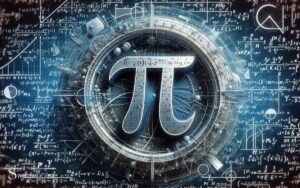Symbol for If in Math: Implication
The symbol for “if” in mathematics is typically represented by the implication sign, which is a forward arrow “→”. In logic, “if P then Q” can be written as “P → Q”.
In mathematics, especially in the realm of logic and conditional statements, the term “if” is used to specify a condition or a hypothesis. Logical implications are fundamental to proofs and logical reasoning.
For instance:
This implication can be symbolized as: P → Q
This construct is the backbone of logical expressions, and it is essential to understand how it operates within different mathematical contexts, such as proofs, theorems, and algorithm design.
Understanding the implication symbol “→” is crucial for delving into mathematical logic and constructing valid arguments in proofs and reasoning.

Key Takeaway
Importance of the ‘If’ Symbol
Although often overlooked, the ‘if’ symbol plays a crucial role in mathematical logic. In mathematics, the ‘if’ symbol is represented by the conditional statement “→” and is used to express implications. It is fundamental in forming logical arguments and proofs.
The ‘if’ symbol is essential in defining mathematical relationships and establishing conclusions based on given premises.
It allows mathematicians to express logical connections between different mathematical statements and is widely used in various branches of mathematics such as algebra, calculus, and discrete mathematics.
Understanding the ‘if’ symbol is fundamental for grasping the logical structure of mathematical arguments and is paramount for students and professionals alike.
Its proper usage ensures clarity and precision in mathematical reasoning, making it an indispensable tool in mathematical discourse.
Basic Representation in Logic
The ‘if’ symbol in mathematics is a fundamental element of logical representation. When representing statements in logic, the ‘if’ symbol is commonly used to express conditional relationships. The conditional ‘if’ often pairs with ‘then’ to form ‘if-then’ statements, establishing a clear cause-and-effect relationship between two propositions. In contrast, the symbol for or in math (usually represented by ∨) is used to denote a choice or alternative between statements, meaning at least one of them must be true. Both the ‘if’ symbol and the symbol for or in math are critical tools for constructing and analyzing logical arguments.
Within this framework, the following points are essential to understand:
Conditional Statements:
- These statements consist of an “if-then” structure, where the occurrence of one event (the “if” part) implies the occurrence of another event (the “then” part).
Truth Values:
- In logic, the truth value of a conditional statement is based on whether the “if” part is true and whether the “then” part is true, leading to four possible combinations of truth values.
Understanding these basic principles is crucial for utilizing the ‘if’ symbol effectively in mathematical and logical contexts.
Use in Conditional Statements
Now that we have established the basic representation of the ‘if’ symbol in logic, it is essential to explore its use in conditional statements. This includes understanding the symbol for implication and its application in logical reasoning.
By examining these points, we can gain a deeper insight into how the ‘if’ symbol functions within conditional statements.
Symbol for Implication
Imply the relationship between two mathematical statements using the symbol for implication in conditional statements. In mathematical logic, the symbol for implication is represented by “→” and is read as “implies” or “if…then”.
This symbol is used to denote the relationship between the antecedent (the “if” part) and the consequent (the “then” part) of a conditional statement.
When using the symbol for implication, it is essential to understand that the truth value of the statement is based on the truth values of the antecedent and consequent.
To clarify, the implication is only false when the antecedent is true, but the consequent is false. This concept is crucial in understanding logical reasoning and constructing valid arguments.
Application in Logic
When formulating conditional statements in mathematics, the symbol for implication, represented by ‘→’, plays a crucial role in denoting the logical relationship between the antecedent and the consequent.
This symbol is used to express the idea that if one statement is true, then another statement is also true. In conditional statements, the antecedent represents the hypothesis or condition, while the consequent represents the conclusion.
The symbol for implication is instrumental in constructing logical arguments and proofs. It helps in defining the relationship between different mathematical statements, allowing for the establishment of logical connections and conclusions.
Understanding the application of this symbol in logic is fundamental for reasoning and problem-solving in various mathematical contexts, providing a framework for constructing valid mathematical arguments based on logical implications.
If-Then’ Relationships
Implication is a fundamental concept in mathematics that describes the ‘if-then’ relationships between mathematical statements. It is denoted by the symbol “⇒”.
To understand implication, consider the following:
- If-Then Relationship:
- This relationship is expressed as “If P, then Q”, where P is the hypothesis or condition, and Q is the conclusion.
- It signifies that if the hypothesis P is true, then the conclusion Q must also be true.
Understanding implication is crucial in various mathematical fields such as logic, set theory, and proofs. It forms the basis for reasoning and establishing logical connections between different mathematical statements.
By grasping the concept of implication, mathematicians can effectively analyze and draw conclusions from mathematical arguments and structures.
Inverse ‘If’ Statements
The second fundamental concept in understanding ‘if-then’ relationships in mathematics is the concept of inverse ‘if’ statements.
When dealing with inverse ‘if’ statements, it is crucial to grasp the idea that the truth value of the original statement and its inverse are not necessarily the same.
This concept is often represented in a truth table, illustrating the different combinations of truth values for the original statement and its inverse.
The table below highlights the truth values for both the original statement (P) and its inverse (¬P) in different scenarios.
Understanding inverse ‘if’ statements is essential for logical reasoning and problem-solving in mathematics.
If and Only If’ (IFF) Symbol
To delve into the topic of the ‘If and Only If’ (IFF) symbol, a thorough understanding of logical implications is indispensable for effectively grasping its significance within mathematical contexts.
The IFF symbol, represented as ⇔, is used to express a biconditional relationship between statements.
Here’s a breakdown of its key aspects:
- Biconditional Statement: The IFF symbol is utilized to denote that two statements are both true or both false.
- Example: “An angle is a right angle if and only if it measures 90 degrees” can be represented as “A ⇔ B,” where A represents “an angle is a right angle” and B represents “it measures 90 degrees.”
- Logical Equivalence: The IFF symbol signifies that the truth value of one statement is entirely dependent on the truth value of the other statement.
- Example: In the context of mathematical proofs, the IFF symbol is employed to establish the equivalence between two propositions.
Applications in Set Theory
The concept of “if” in mathematics plays a crucial role in set theory, particularly in relation to set operations, conditional statements, and if-then relationships within sets.
Understanding how the “if” symbol is applied in these contexts is essential for grasping the foundational principles of set theory and its practical applications.
By examining the points of set operations with “if,” conditional statements in sets, and if-then relationships in sets, we can gain a deeper insight into the significance and utility of the “if” symbol within the framework of set theory.
Set Operations With if
Set operations involving the ‘if’ condition play a crucial role in applications of set theory. In set theory, the ‘if’ condition is often used to define subsets or perform operations based on certain conditions. This allows for the manipulation and analysis of sets in a variety of contexts.
Two key applications of set operations with ‘if’ include:
Conditional Union and Intersection
- The ‘if’ condition can be used to perform union or intersection operations on sets based on specific criteria, such as elements belonging to a certain subset or meeting particular properties.
Conditional Complement
- By using the ‘if’ condition, sets can be complemented based on certain conditions, for example, removing elements that satisfy a specific property.
These applications illustrate how the ‘if’ condition enhances the versatility and practicality of set operations in set theory.
Conditional Statements in Sets
Discussing conditional statements in sets, applications in set theory involve analyzing and manipulating sets based on specific criteria, further expanding the practical utility of set operations.
Conditional statements in sets are crucial in defining subsets, intersections, and unions based on specific conditions.
Here’s a table illustrating the application of conditional statements in sets:
| Condition | Set Theory Operation | Description |
|---|---|---|
| A = B | Intersection | Elements common to both sets A and B |
| A ≠ B | Union | Elements in either set A or B or both |
| A ⊆ B | Subset | Every element in set A is also in set B |
Understanding conditional statements in sets is fundamental in effectively utilizing set theory to solve real-world problems and make logical deductions.
If-Then Relationships in Sets
- An essential aspect of set theory involves the establishment of if-then relationships to determine specific conditions for set operations.
- If-then relationships in sets help define conditions for set operations.
- For example, if A is a subset of B, then any element in set A is also in set B. This relationship helps establish the containment of elements within sets.
- Similarly, if A and B are disjoint sets, then their intersection is an empty set. This relationship defines the absence of common elements between sets.
These if-then relationships play a crucial role in understanding and defining set operations, providing clear conditions that govern the behavior of sets.
By establishing these relationships, set theory can effectively analyze and manipulate sets to solve complex mathematical problems.
Practical Examples in Mathematics
When considering practical examples in mathematics, it is important to understand how the ‘if-then’ statement is applied in various mathematical contexts.
One common application is in geometry, where the use of conditional statements helps in proving theorems.
In algebra, if-then statements are used in solving equations and inequalities. Additionally, in probability and statistics, if-then statements are utilized to define conditional probability. The table below provides practical examples of the ‘if-then’ statements in mathematics.
| Mathematical Context | Practical Example |
|---|---|
| Geometry | If a triangle is equilateral, then all its angles are equal. |
| Algebra | If x + 3 = 7, then x = 4. |
| Probability | If a card drawn is a spade, then the probability of it being a face card is 3/13. |
These examples illustrate the diverse applications of the ‘if-then’ statement in mathematics.
Conclusion
The ‘if’ symbol in mathematics plays a crucial role in representing conditional statements and relationships. Its use in logic and set theory allows for the formulation of precise mathematical arguments and proofs.
Understanding the implications of the ‘if’ symbol is essential for solving mathematical problems and reasoning through complex concepts.
As we delve deeper into the world of mathematics, the ‘if’ symbol continues to reveal its significance in shaping the foundation of mathematical principles and theories.






